Through The Glass: Animation
A short motion graphic exploring Thomas Hardy’s relationship with religion for the client Wessex Museums. The motion graphic will be shown within an upcoming exhibition in Salisbury Museum. In collaboration with Josiah Lunt, Bethany Mckeever, Gabija Daujotaite and Adam Lundie.
Audience and Context
The animation needed to be suitable for children, accessible to museum attendees with no prior knowledge of Thomas Hardy whilst also engaging audiences well versed in Hardy’s literature.
Choosing Text
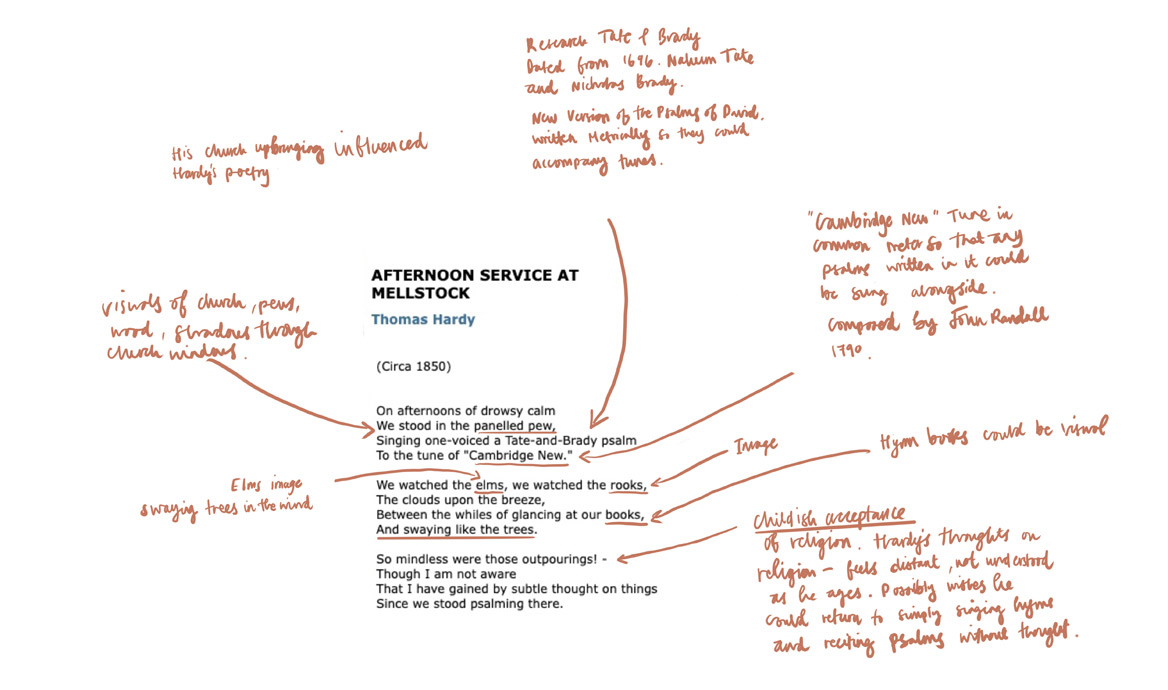
I felt this poem provided a rounded view on Hardy’s relationship with religion. It begins with a reflection on his experiences of church as a child and ends with a comment on his more present feelings of disconnect, disappointment and longing. This notion towards religion aligned with those in his other later works such as The Impercipient and Jude the Obscure. I chose this poem as a basis for the motion graphic due to it’s succinct length and playful imagery.
Storyboards and Animatic
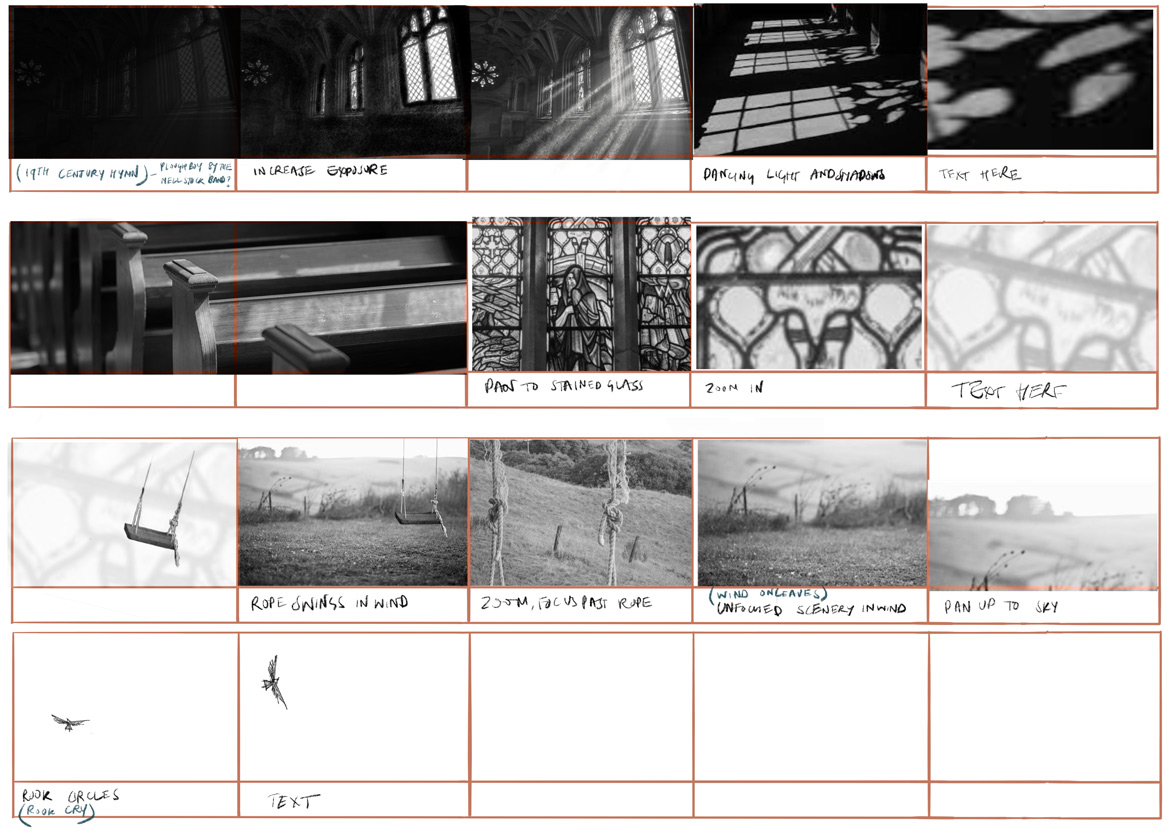
The initial storyboard I pitched follows the narrative of the poem, taking the viewer into Hardy’s childhood memories. It begins with a series of slow pans within a church setting, transitioning to scenes of Dorset where the poem describes elements of the countryside. This storyboard was chosen by the rest of the team to take forward.
In developing the narrative, we found that our aim for the animation was quite far reaching with the constrictions of the animation’s length and our production deadline. Our main problem was how to visually convey Hardy’s distancing and increasingly negative outlook on religion in a way that could be felt and understood by the viewer. We specifically wanted to avoid trying to animate an autobiography of his life to reason his journey.
Knowing that ‘Jude the Obscure’, Hardy’s final novel, would be a main feature of the Salisbury exhibition, we explored the parallels of Hardy’s journey with religion and Jude, the protagonist’s, journey. We chose to depict scenes from the novel showing Jude’s transition from viewing religion as a source of hope to a source of pain and anger at what could have been but was not. Josiah Lunt put together an animatic of our ideas at the time to help visualise the narrative, pace and pairing of the sound and visuals.
Final Storyboard
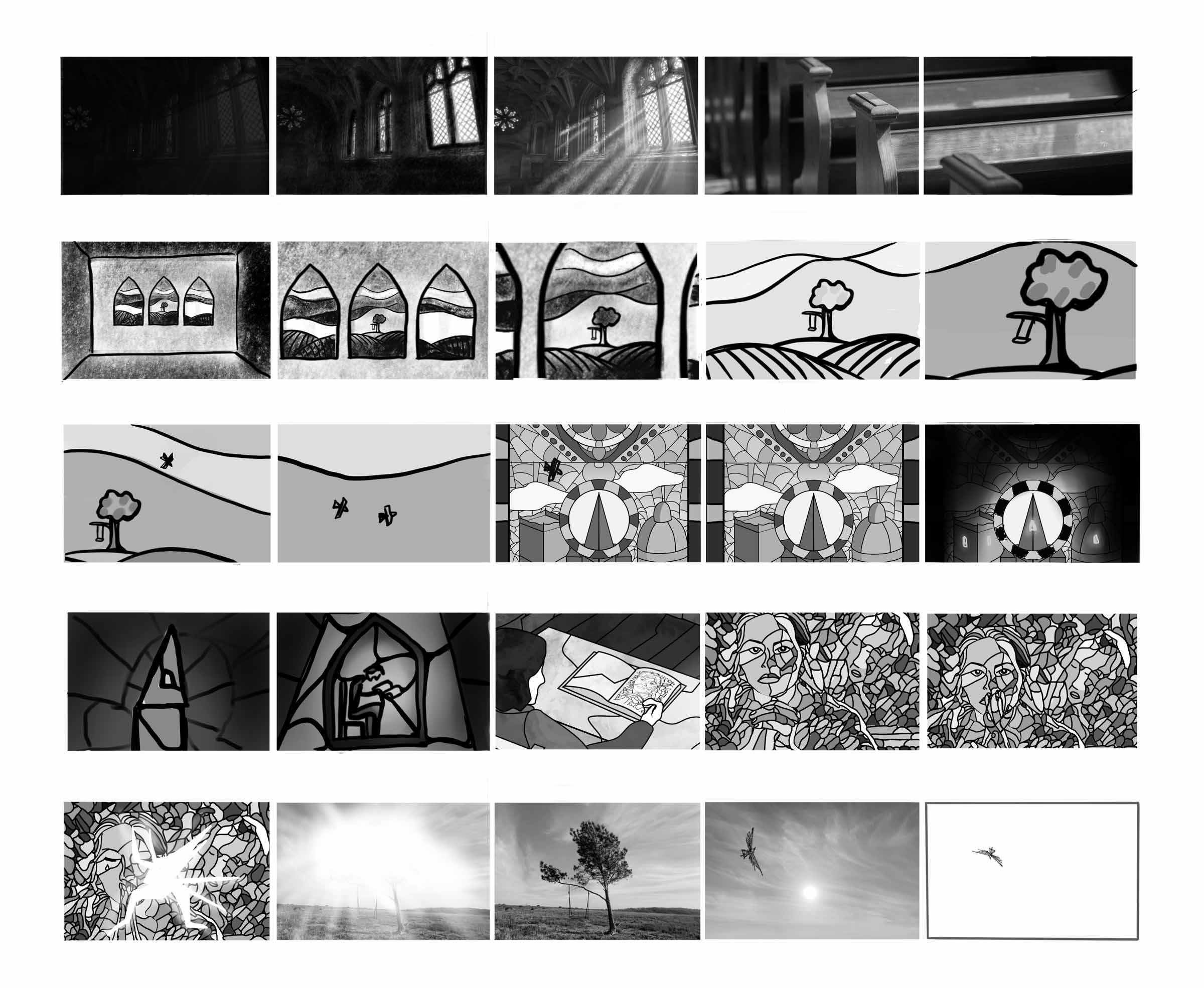
Using feedback on this animatic, we developed the final storyboard. This resolves the ending, breaking out from the church setting and into a more peaceful Dorset countryside to represent Hardy’s moving away from religion and towards a relationship with the countryside.
Style Development
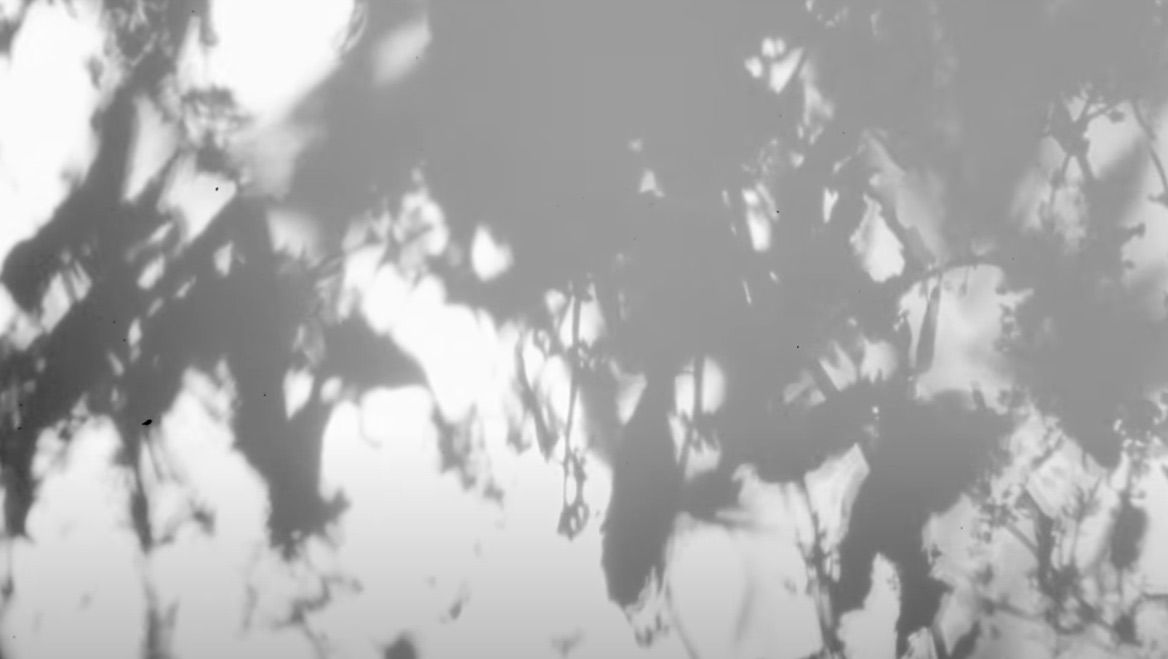
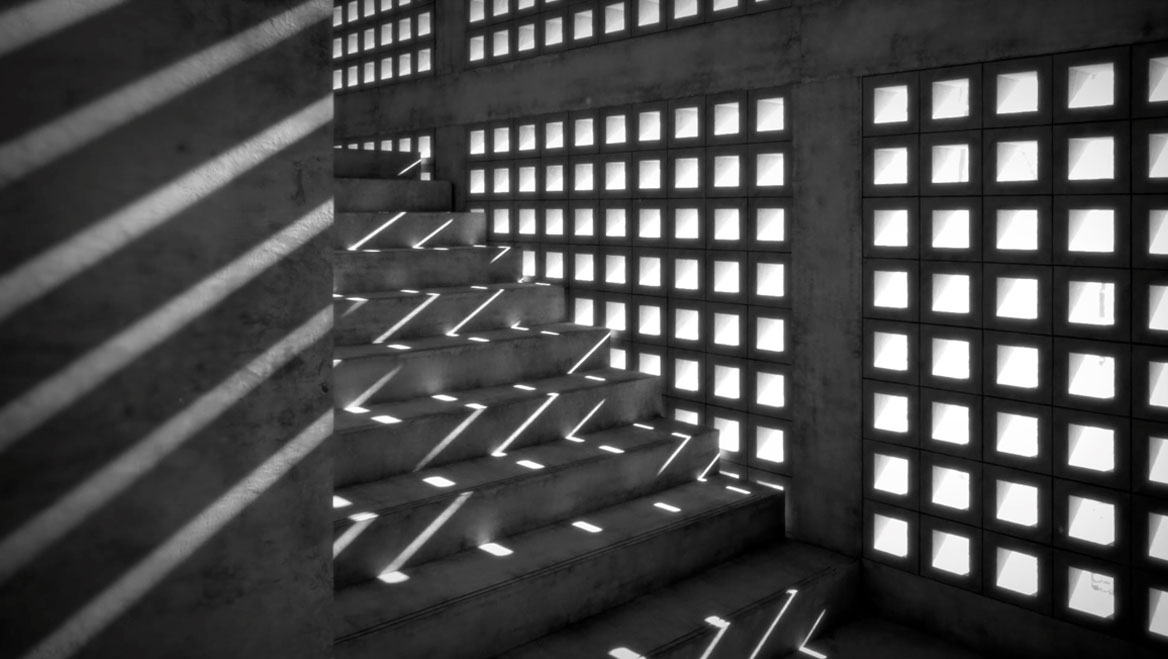
For the style I proposed a tonally rich monotone aesthetic similar to that in the films here. I particularly hoped to emphasize light and shadow, and abstract shapes within the church. Using this approach, combined with a gentle pace and smooth transitions would ensure the focus would be on reflection and exploration of the topic rather than the execution of the motion graphic.
I experimented with live action as a means of rapidly capturing moving image. Using this footage, I explored options for framing and transitions. This footage was used as reference for creating the 2D stained glass scenes and 3D church environment.

We looked at stained glass imagery as a style of illustration that would point to the theme of religion and be achievable to make for the project deadline.
Teamwork
Our team members came to the project with quite different graphical approaches, none of us having experience with animating or editing, We split up the workload with each team member, working on a section from the storyboard that best suited our skill set.
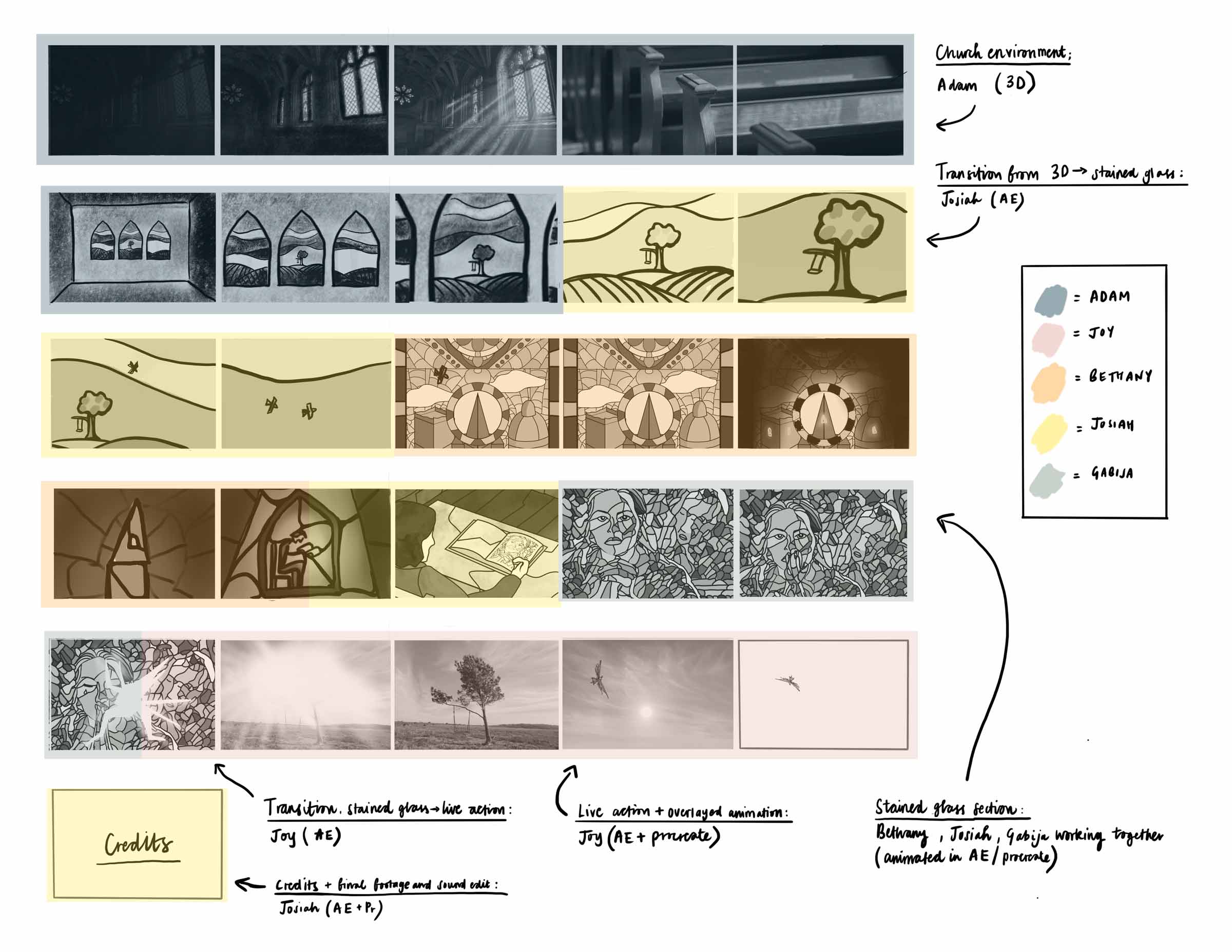
Craft Skills


I worked on the countryside section of the animation. For this, I decided to combine live action footage, with frame by frame animation, enabling me to overlay features such as the rook and swing in an illustrative style.
I began by analysing a rook’s flight pattern. I noticed where basic animation principles described in Brown Bag's '12 Principles of Animation' video could be used e.g. ‘anticipation’ as the bird’s wings flap, ‘slow in’ as the bird is propelled forward and the sustained ‘slow out’ before flapping.
In an initial play back, I realised that the movement looked unrealistic. I gained insight on timing and spacing from the 'The animation basics' TED talk, taking note of the dramatic difference in spacing between when the ball is at its peak and when it is ascending or descending. In response, I repositioned the frames of the bird animation, with more spacing during glides and less when flapping.
Tech Skills
This was my first experience of applying FX to footage. I adjusted the colour grading throughout to ensure the footage from different locations matched and a stabilisation effect to reduce the camera shake in some sections. I also developed the transitions using FX in After Effects. For these, I used light rays, lumetri and glass cracking effects. Below is the pre and post edited footage before it was layered with the stained glass cracking.
Sound Development
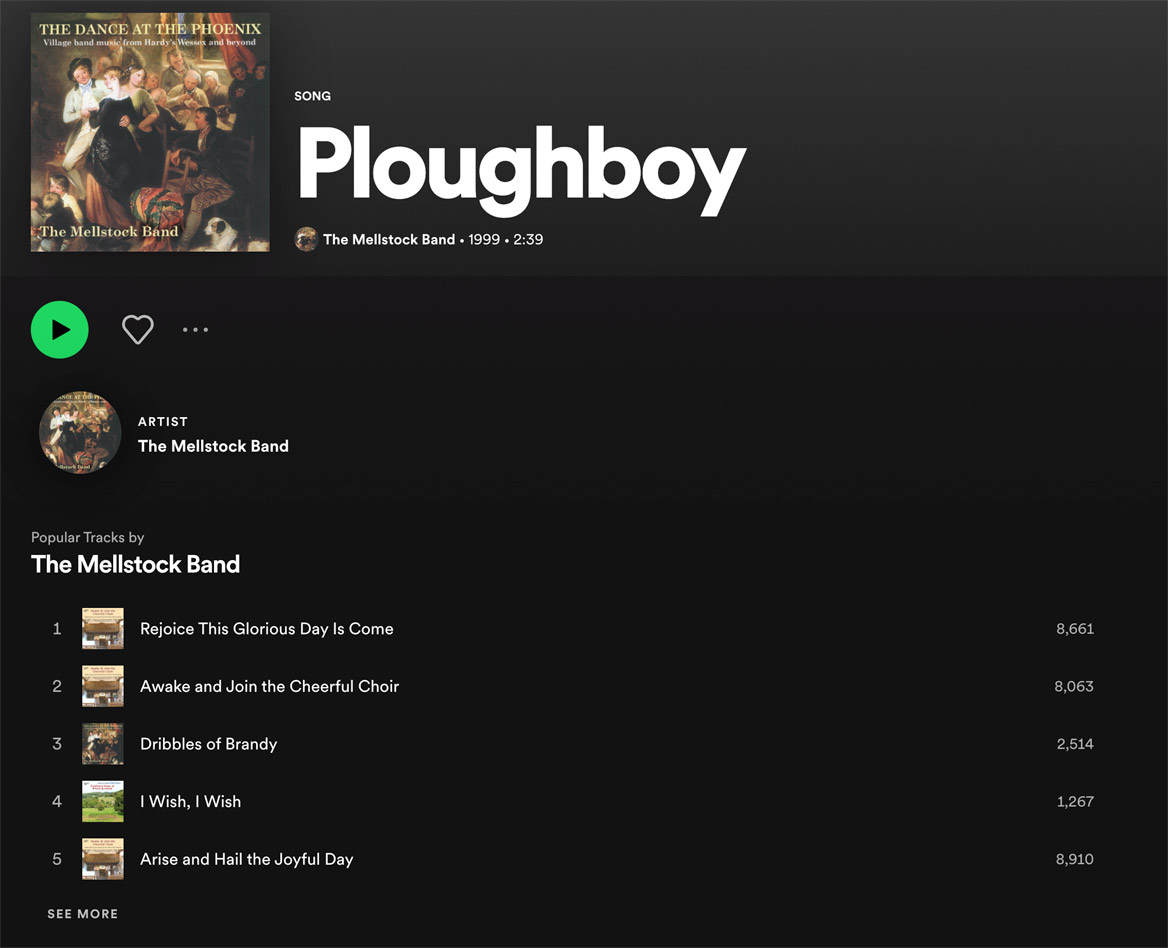
I researched music that could be used alongside the animation to aid the viewer imaging themselves in Hardy’s memories of church and childhood. Therefore, I looked into religious and secular music from the mid 19th century. I listened to recordings of Tate and Brady hymns and other religious renditions but landed on Ploughboy by The Mellstock Band. This piece of music utilises instruments appropriate for the period but creates an atmosphere that museum viewers may find more engaging.
I thoroughly researched music licensing for film to ensure that we would have no issues if the film was chosen by the museum. On this basis, I contacted the record label and artist to obtain licensing for use. This was a valuable experience, exposing me to the licensing process for future projects.
Outcomes
Our animation was chosen to be displayed in the exhibition!
Reflection
I believe our storyline was refined and successfully answered the brief by exploring Hardy’s relationship with religion in a method appropriate to the target audience. We worked well as a team, all bringing ideas and skills that shaped the film. In terms of the outcome, we all animated a section of the storyline. This way of working allowed us to individually explore mediums of animation which was helpful for our personal development but resulted in a disjointed final film. Without a compelling reason, I don’t think this result would be accepted in industry.
Personally, I didn’t enjoy the process of animating because it was time consuming to make small alterations. Having said this, the process of storyboarding and creating an animatic were helpful skills to try out and proved valuable in the efficiency of animating later on. The unit also introduced me to the process of obtaining music licensing which I expect to use in the future. Based on my experience of the project, I would like to explore more simple animations or gifs and refine a way of creating these within a branding aspect. Overall, the unit gave me an introduction to some terminology and tools associated with animation which will make it easier to independently research and learn skills for future projects.